This past weekend there was a lot of hunting for and photo shoots of nudibranchs, also known as the sea slugs! While we found many of the common crew, the real stars were the ones we’d never seen before, the lifers. The list includes: Graceful Aeolid, Hammerhead Doto, Nanaimo Dorid, Humped Ancula, Laguna Beach Aeolid, and Yellow-head Aeolid.
King tides for tidepoolers and naturalists is a calendar worthy event; a time to shuffle whatever else was planned to ensure you make it to the coast. We spent at least four hours at each location each day to ensure we got there firstly in the daylight, and secondly to follow the tide out before it hits absolute low. A common misconception is to get to the tidepools right at low tide: in our experience it’s actually better to get there beforehand so you can enjoy the low tide levels, which are still probably lower than a normal average low tide.
November 2020 king tides all fell at their lowest around 3:30 pm to 5:45 pm between Nov 14 to 16th. With sunset around 4:50PM, night tide pooling was to be expected. Thankfully this year we learned from last winter and acquired chest waders to help keep us slightly warmer and more dry, brought tea to warm us from the inside, and a portable battery pack to ensure our rechargeable headlamps stayed lit.
While any beach with tidepools will do for king tide tidepooling, the locations we visited were researched to maximize finding new nudibranch species to us (thanks hunny). Of course iNaturalist is a go to tool for finding hotspots. In order to personalize your search results to finding new species to YOU, the first step is to set up an explore page with the desired area using the boundary box function on the map view. Second step is to add “&unobserved_by_user_id=your iNat handle” to the end of your url. And waaa la! Your new list of “lifers,” or for some species, it includes a list of species you’ve seen before but yet to upload to iNat.
Here are are some photos and mini description of our newly discovered friends.
Nanaimo Dorid, Acanthodoris nanaimoensis
What a gorgeous little gem! Not too many nudibranchs have brightly colored branchial plumes, a little early holiday moment. Apparently, (only according to Gary MacDonald, from what I can find) they smell of cedar/sandalwood when handled. Huh? I’ve never heard of an odorous nudi! While I try to minimize handling to the minimum, these photos were taken after repositioning this cutie from a rock wall to a pool. I wish I’d known they smell and I would have totally taken a whiff! Next time!
However, there are actually many more smelly slugs. The nudibranch Queen herself Robin Agarwal wrote a piece about this for Morro Bay National Estuary Program, read about it here.
Graceful Aeolid, Abronica abronia
I can’t say this common name fits it perfectly, as common names can be odd and eyebrow raising. Most nudis I could describe as graceful, but they really don’t move in any other way than any other normal slug does . . . slowly. When nudis detach themselves from their spot and slowly drift in the current they boop and bong into whatever nearby algae/rocks/human feet until reattaching, perhaps one could call it graceful, maybe?
Anywho, Abronica abronia has distinctive banding patterns in a lovely creamy white and purplish color on the cerata and head tentacles. A beautiful base of maroon, and brownish green with whitebands make up their ceratal digestive glands.
Humped ancula, Ancula gibbosa
What a translucent little dude! This one is by far the most translucent species I’ve seen, maybe my first observation of a Lion’s Mane Nudibranch comes close. Along with it’s tiny-ness I really had to inspect this guy up close to view all its lovely anatomy. A white-spotted coloration occurs up in British Columbia, neat!
Laguna Beach Aeolid, Diaphoreolis lagunae
Ooo those orange rhinophores just scream “look at me!” Like a lot of nuibranchs the only information on them besides the basics describing location, physical description and taxonomy is usually what they eat. For this stunner, like other nudis it eats a specific species of hydroid. Xingyurella turgida is the Laguna’s preferred hydroid, which like other hydroids in the Superfamily Sertularioidea it grows in a ‘zig zag’ pattern. With only three observations of this hydroid on iNat, I want to be numero four.
Yellow-head Aeolid, Diaphoreolis flavovulta
This babe was initially described in Monterey, CA, classic. While the tidepoolers we run into call it “Yellow-head,” it’s also known as “Yellowish.” Ummm there are a lot more yellow colored sea slugs out there, i.e. Monterey Doris, Sea Lemon, White-spotted Dorid to name a few. Even though I have an extreme bias towards anything yellow I love this sea slug’s distinctive orangey colored head blotch.
Hammerhead Doto, Doto amyra
Hammerhead has been a long sought after slug. Tiny somewhat accurately portrays its size, but not really, you just have to find one yourself, and when you do it’s like winning a nudibranch hunting medal. Congrats, you’ve joined a special club!
The next king tides in 2020 are December 13th to 15th. If you miss the lowest lows in 2020, you’ve got a chance on January 11th and 12th 2021. Good luck, and stay safe! Mask up y’all.
Here are a few other observations from the weekend.
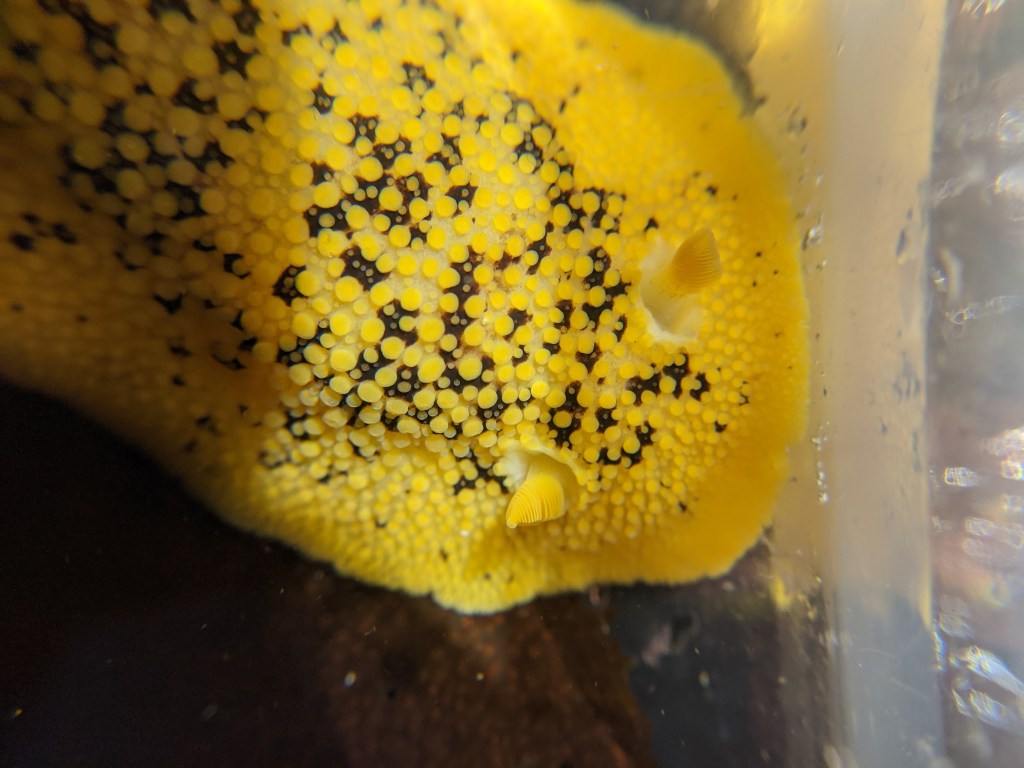
Monterey Doris 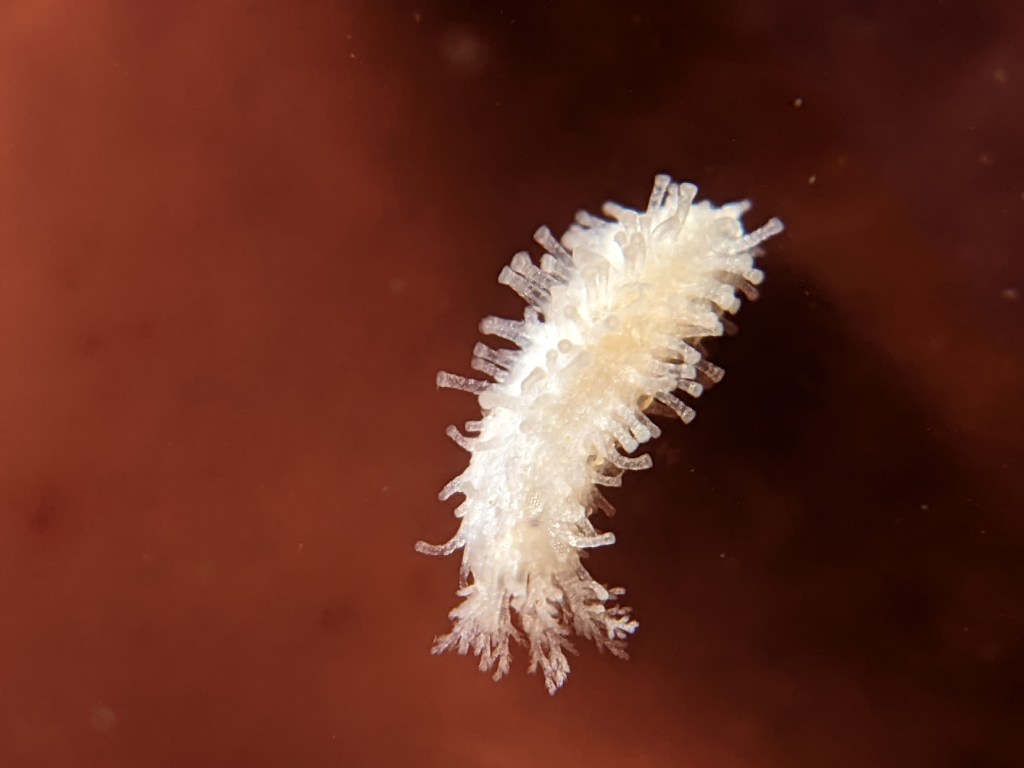
Stiff-footed Sea Cucumber 
Bat Star
- Resources
- A Sea Slug By Any Other Name, Guest Post by Robin Agarwal, Morro Bay National Estuary Program.
- Graceful, Cuthona abronia on Sea Slug Forum
- iNat page for Superfamily Sertularioidea
- Cuthona flavovulta, Intertidal Invertebrates of the Monterey Bay
- Memoirs of the California Academy of Sciences, MacFarland 1966, pages 336-337




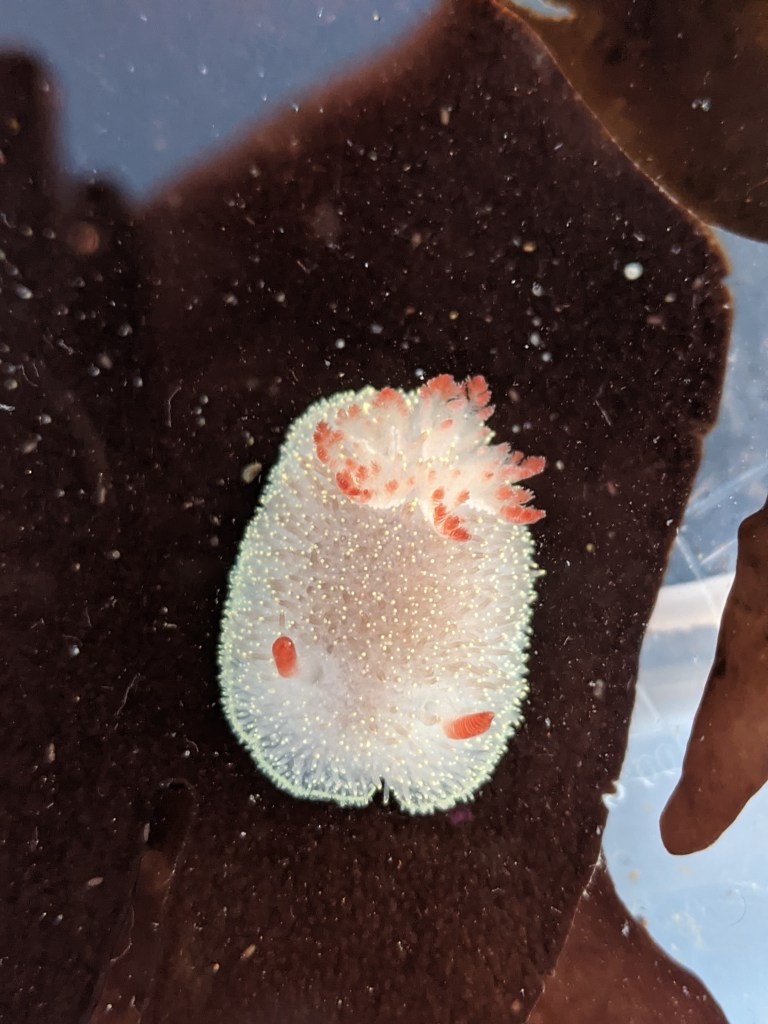

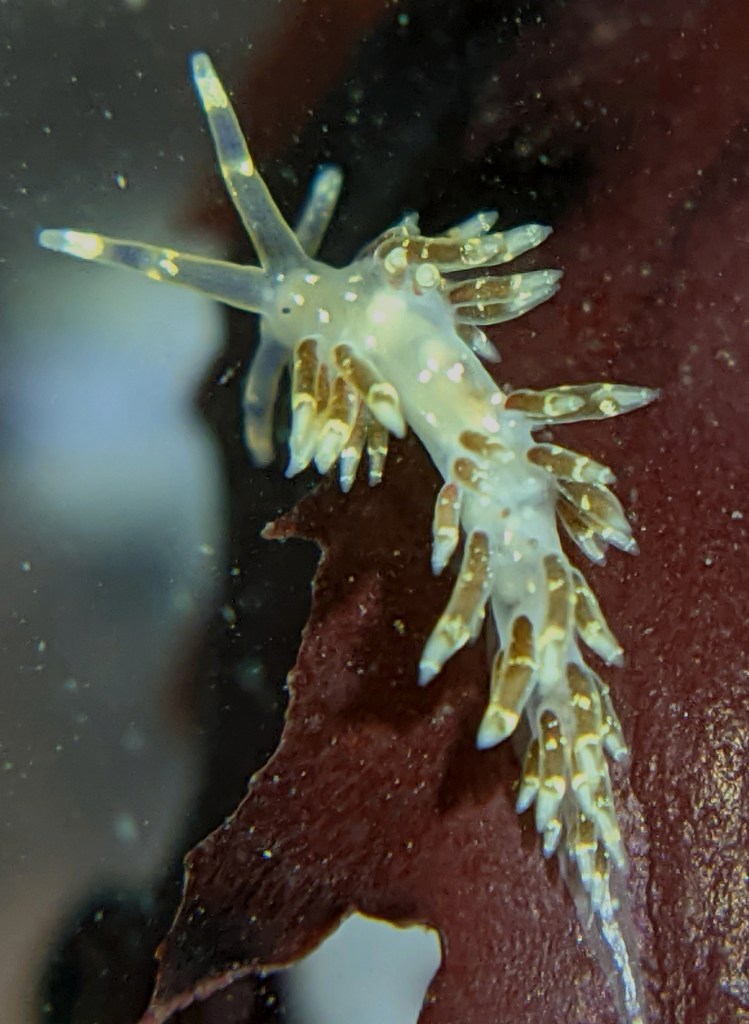
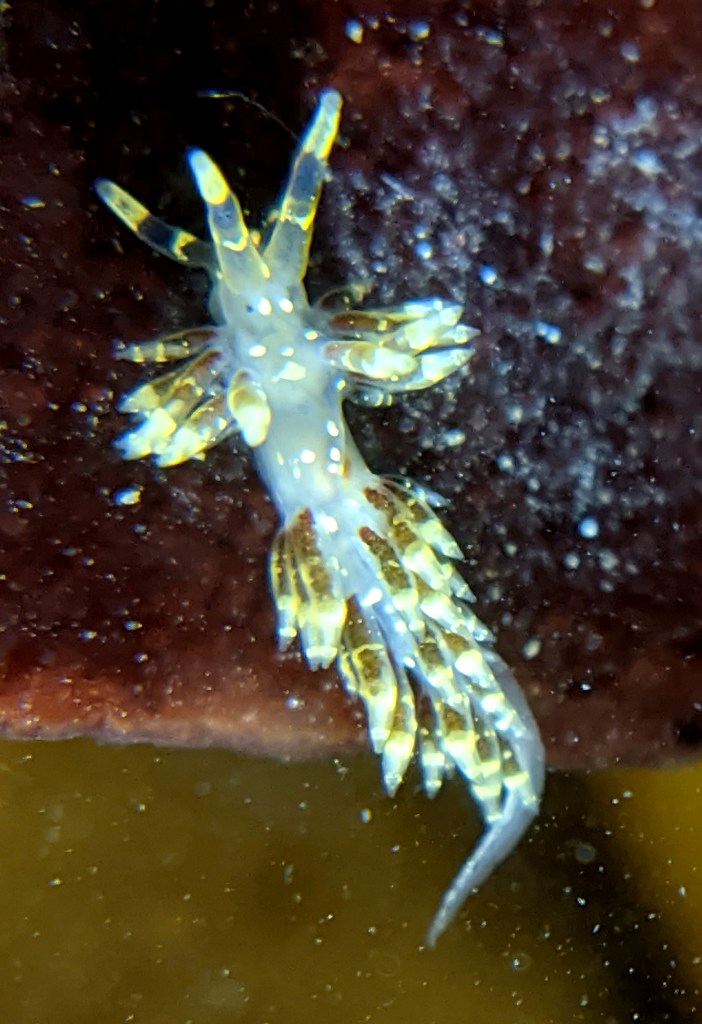
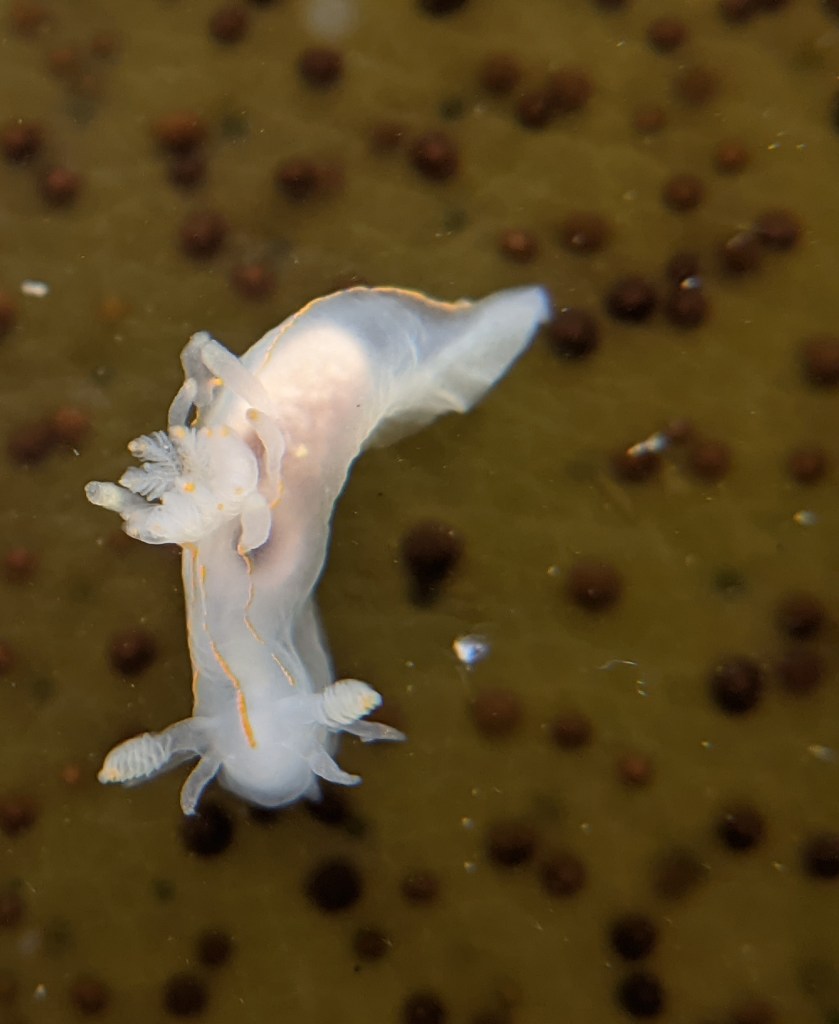











Excellent work Chloe!Sent from my Galaxy
LikeLike
Thank you!
LikeLike